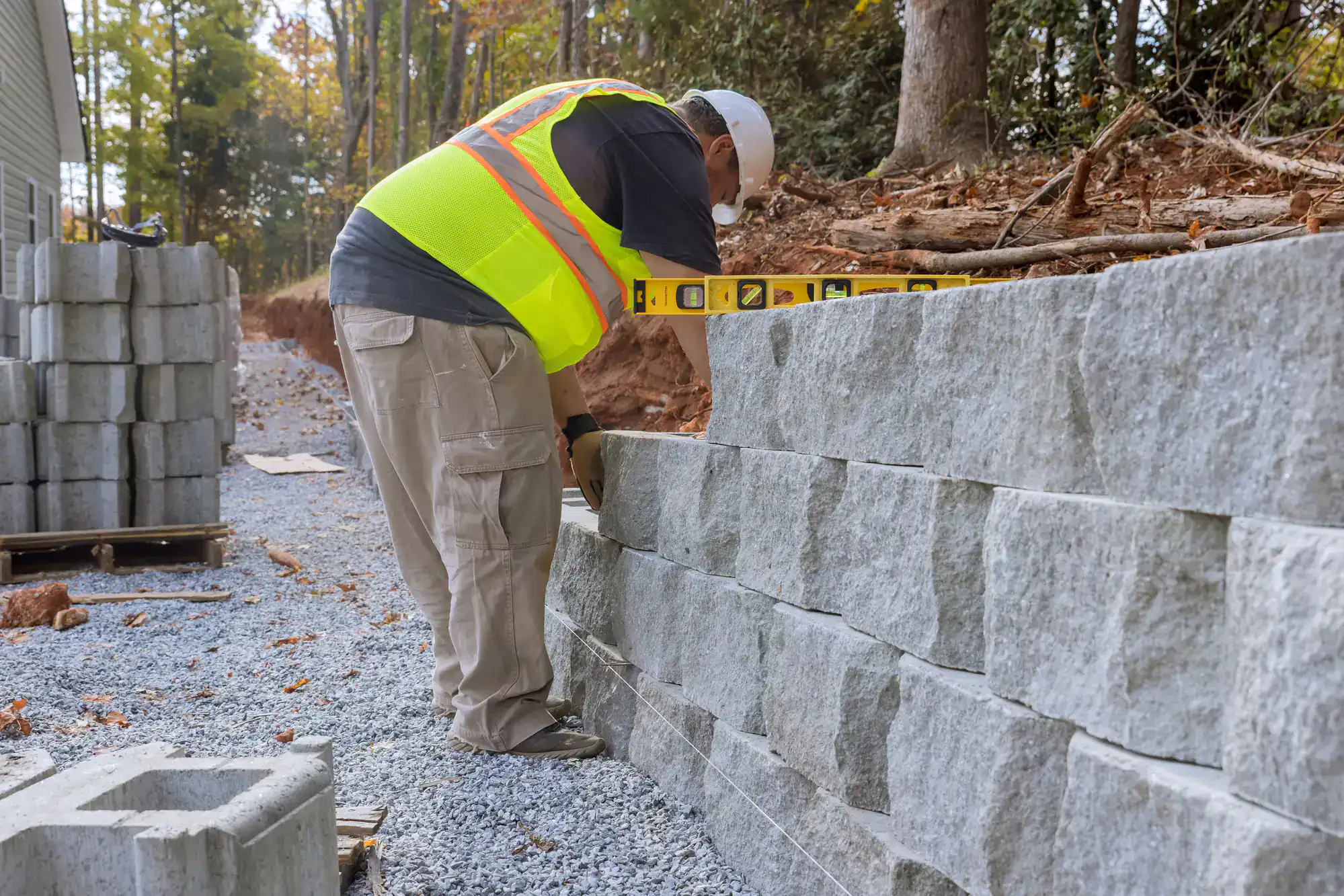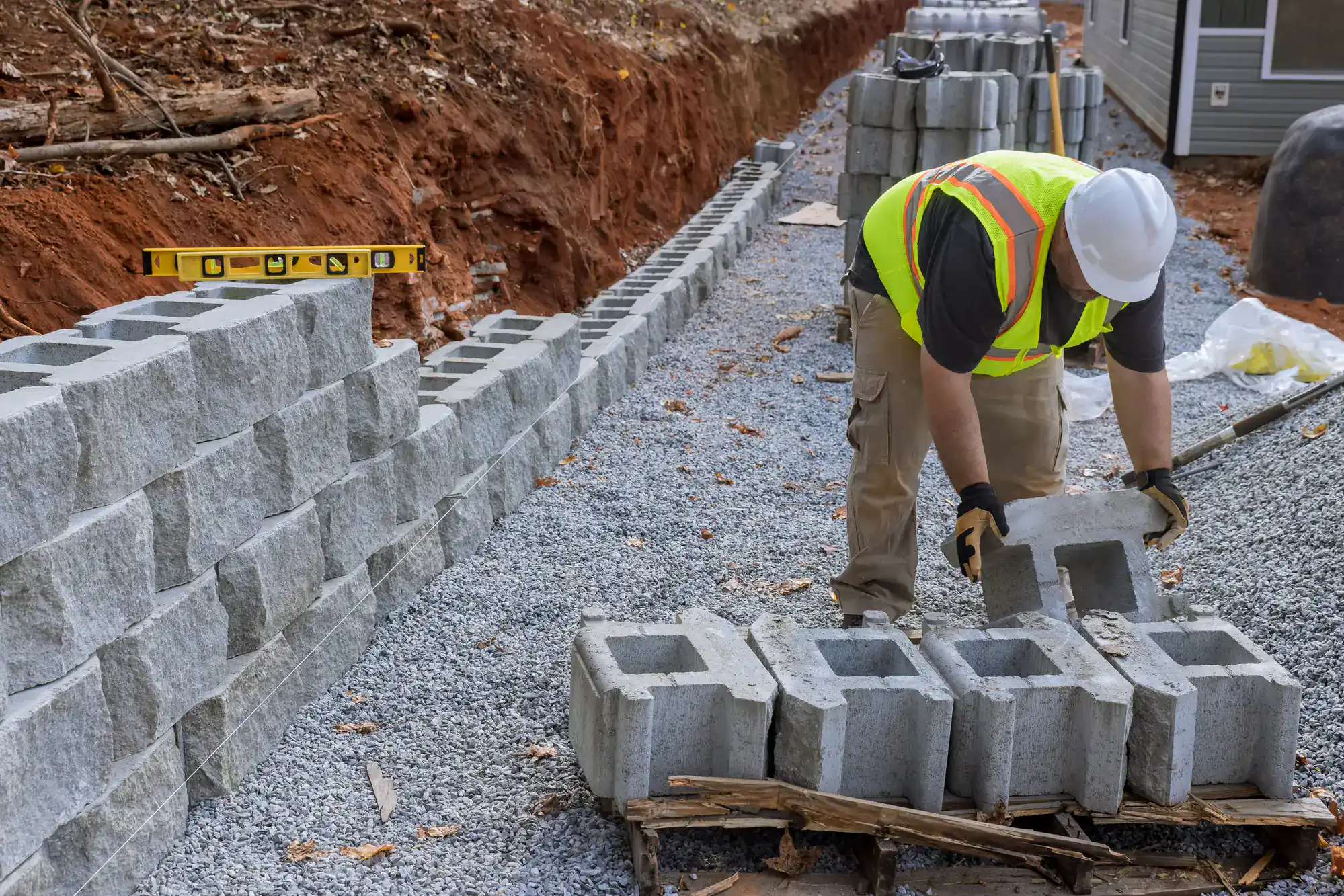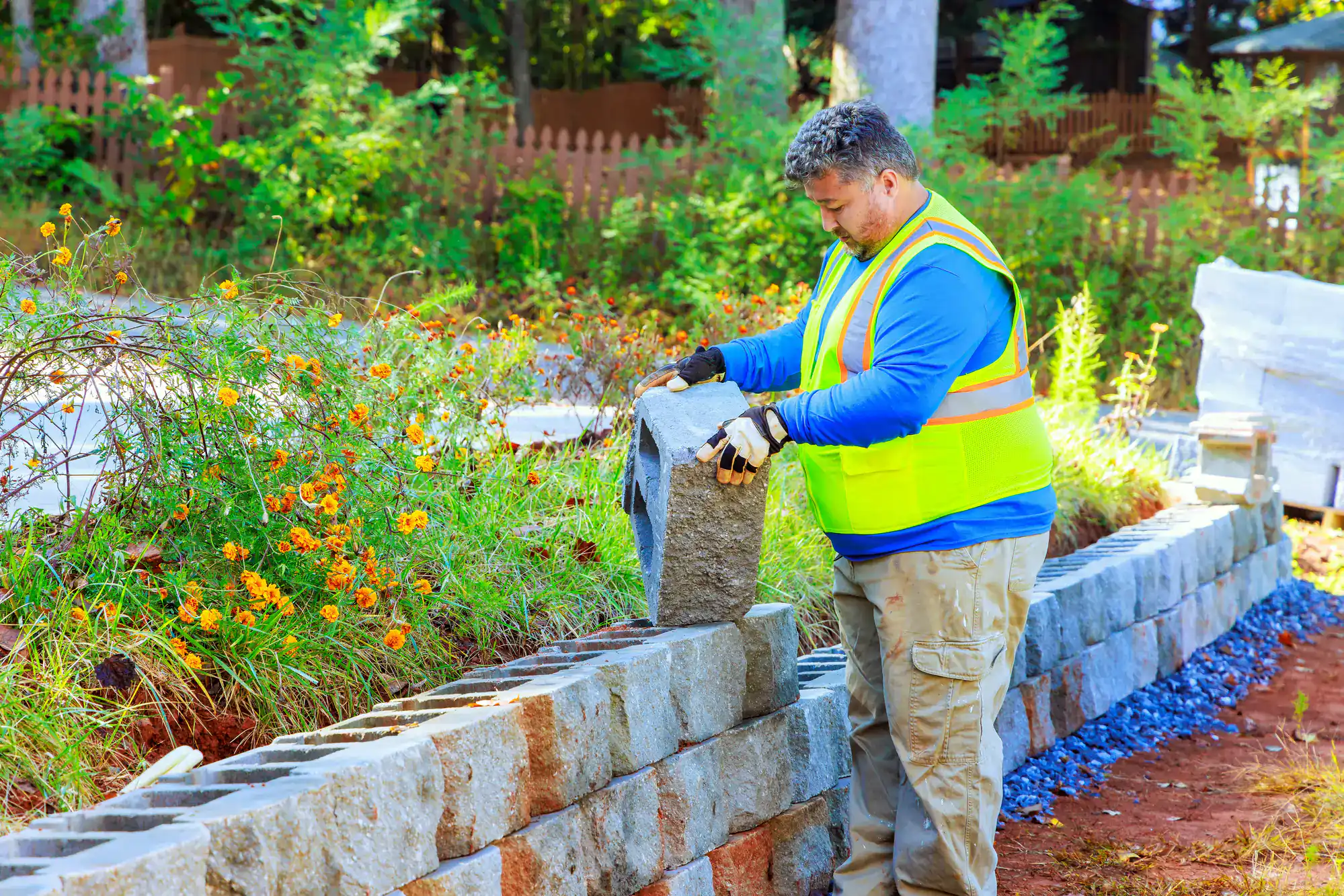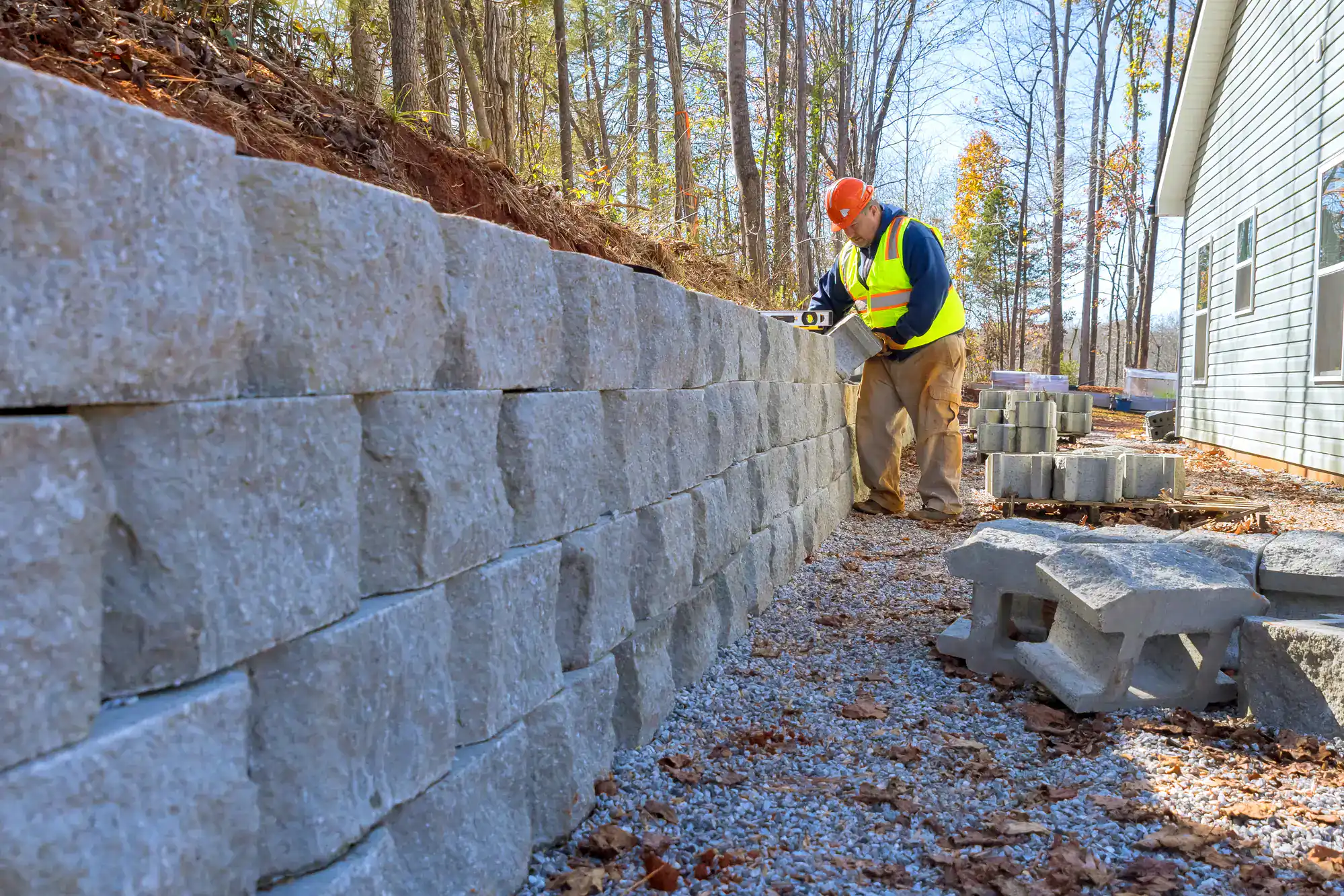

Your sloped yard doesn’t have to be a constant headache. When soil keeps washing away after every heavy rain, when you’re losing usable space to steep grades, when you’re worried about foundation damage – that’s when you need a retaining wall that actually works.
A properly built retaining wall stops erosion in its tracks. You get stable soil that stays put, even during Florida’s intense storm seasons. Your property value increases, your insurance worries decrease, and you finally have outdoor space you can actually use.
The difference between a wall that lasts decades and one that fails in a few years comes down to proper drainage, quality materials, and understanding High Point’s unique soil conditions. Sandy soils here drain fast but erode easily – which means your contractor better know what they’re doing.
Since 1995, we’ve been the family-owned retaining wall contractor High Point residents trust. We’ve seen every type of soil condition, drainage challenge, and slope problem this area can throw at a property.
What makes us different is simple: we do the job right the first time. No shortcuts, no cheap materials, no hoping it holds up. We’re authorized contractors for Tremron, Flagstone, and Belgard – the manufacturers that make retaining wall materials built for Florida’s challenging conditions.
When your neighbors needed help after hurricanes, we were there. When local families needed support, we stepped up with Toys for Tots and youth programs. We’re not just contractors – we’re invested in this community’s long-term success, including yours.

First, we evaluate your property’s specific challenges. Soil composition, drainage patterns, slope angles, and any existing foundation concerns. This isn’t a quick walkthrough – it’s a thorough analysis that determines exactly what type of wall your situation requires.
Next comes the engineering and permits. In High Point, walls over 12 inches typically need permits, and taller walls require additional safety features. We handle the paperwork and ensure everything meets local building codes from the start.
Construction begins with proper excavation and base preparation. This is where most DIY projects and inexperienced contractors fail. The foundation must be perfectly level and properly compacted, especially in Florida’s sandy soils. Then comes the systematic installation of each course, with proper drainage integration throughout.
The final step is backfilling with appropriate materials and installing any required drainage systems. Your wall isn’t complete until water has a proper path away from the structure. That’s how you get a retaining wall that performs for decades, not just years.

Ready to get started?
Your retaining wall project includes everything needed for long-term success. Quality interlocking blocks designed for Florida’s climate, proper drainage systems, and professional-grade base materials that won’t shift or settle over time.
High Point’s sandy soils require specific construction techniques. The area’s high water table and frequent heavy rains mean drainage isn’t optional – it’s critical. Every wall includes integrated drainage to prevent hydrostatic pressure buildup that causes failures.
Material options include segmental concrete blocks, natural stone, and poured concrete – each with specific advantages depending on your property’s needs and aesthetic preferences. Heights range from decorative garden walls to substantial structural barriers, all engineered for local soil conditions.
Our service also covers any necessary permits and engineering requirements. Walls over 30 inches in High Point require additional safety features, and anything near water management areas needs special approvals. We handle these details so your project stays on schedule and meets all regulations.

Retaining wall costs in High Point typically range from $2,000 for small decorative walls to $10,000 or more for larger structural walls. The price depends on wall height, length, materials chosen, and site conditions like soil type and drainage requirements.
Interlocking concrete block walls generally cost $15-30 per square foot, while natural stone runs $25-40 per square foot. Poured concrete walls cost $30-40 per square foot but offer superior strength for challenging conditions.
Additional costs include permits (required for walls over 12 inches), engineering for walls over 3 feet, and any necessary site preparation. These upfront investments ensure your wall meets local building codes and performs properly for decades.
Yes, most retaining walls in High Point require permits if they’re taller than 12 inches. Walls between 30-36 inches also require fencing or railings for safety. The permitting process typically takes 2-4 weeks and costs several hundred dollars.
Permits ensure your wall meets structural requirements for local soil conditions and drainage patterns. High Point’s sandy soils and high water table create specific engineering challenges that must be addressed in the design phase.
We handle the permit application process, including any required engineering drawings and structural calculations. This protects you from liability issues and ensures the wall will pass final inspection. Attempting to skip permits can result in fines and forced removal of non-compliant walls.
High Point’s sandy soils work best with segmental concrete block walls or properly engineered poured concrete walls. Sandy soils drain well but don’t provide strong lateral support, so the wall system must be designed to handle these specific conditions.
Interlocking concrete blocks are popular because they’re engineered for Florida conditions and include integrated drainage features. The modular design also accommodates minor settling that can occur in sandy soils without structural failure.
Proper base preparation is critical regardless of wall type. This includes excavating to stable soil, installing compacted aggregate base, and integrating drainage systems to prevent water buildup behind the wall. These steps are especially important in High Point’s high water table environment.
Most retaining wall projects in High Point take 3-7 days for construction, plus 2-4 weeks for permits and planning. The timeline depends on wall size, site conditions, and weather. Larger walls or challenging sites may require additional time.
The process starts with site evaluation and permit applications. Once permits are approved, construction typically begins within 1-2 weeks depending on contractor availability and weather conditions.
Weather delays are common during Florida’s rainy season (June-October). Proper drainage installation can’t be rushed, and concrete work requires dry conditions for proper curing. We build weather contingencies into project schedules to avoid delays and quality issues.
Yes, properly constructed retaining walls typically increase property values by creating usable outdoor space and preventing erosion damage. The exact increase depends on the wall’s size, materials, and how much additional functional space it creates.
Retaining walls that solve drainage problems or prevent foundation damage provide significant value by eliminating ongoing maintenance costs and insurance concerns. They also allow for landscape improvements that weren’t possible on sloped terrain.
High-quality materials and professional installation are key to maximizing value increase. Poorly constructed walls can actually decrease property value and create liability issues. Professional installation ensures the wall enhances your property’s appeal and functionality for decades.
High Point’s sandy soils and high water table require comprehensive drainage systems behind retaining walls. This includes drainage aggregate, perforated drain pipes, and proper outlet systems to prevent hydrostatic pressure buildup.
The drainage system starts with a layer of clean gravel behind the wall, followed by filter fabric to prevent soil migration. Perforated pipes collect water and direct it to appropriate outlets away from the structure and your foundation.
Without proper drainage, even well-built walls can fail from water pressure. High Point’s frequent heavy rains and high groundwater levels make drainage systems non-negotiable for long-term wall performance. We include these systems as standard practice, not optional upgrades.
Useful Links